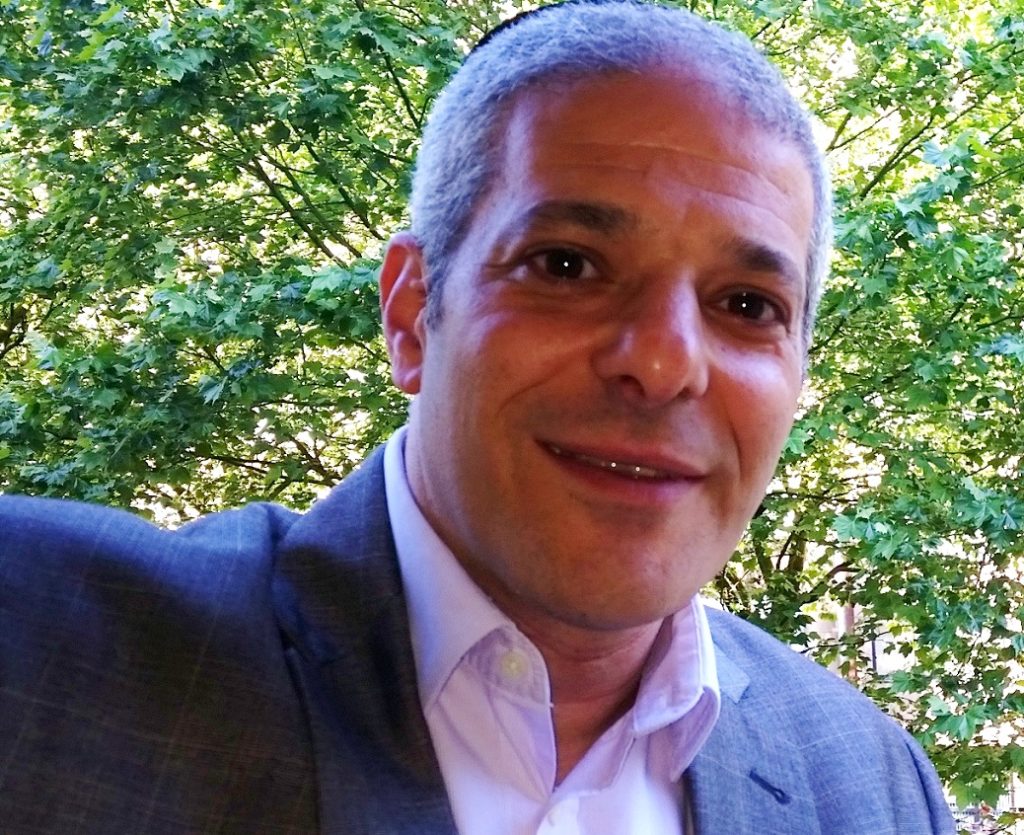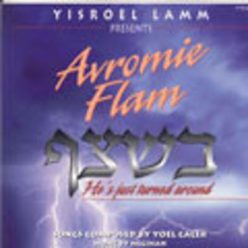Album: B'Shetzef - Avromi Flam
Composer: Yoel Calek
Year: 2003
"Hisnaari mei’afar kumi — Shake off the dust arise. Adorn yourself with your robes of glory My people… My soul draws near to its Redeemer.” Rav Shlomo Alkabetz’s profound poetic metaphor echoes through time with a haunting beauty.
Dozens maybe hundreds of niggunim are sung for Lecha Dodi but Yoel Calek’s “Hisnaari” stands out in the way it sets off this particular stanza as both a liturgical prayer and a popular song. The melody even without the words is clearly one of longing with the verse’s final kneitsh of “karvah el nafshi ge’alah ” bringing listeners to a new degree of Shabbos inspiration. In Israel the niggun is popular as a wedding song and can even be found as a ringtone on countless kosher cell phones.
As son of legendary London Boys’ Choir composer and founder Yigal Calek Yoel grew up as part of a musical family. He remembers first playing the piano at age two. By age nine he was already composing and at 15 some of his songs were performed and recorded by his father’s choir. “Yerushalayim harim saviv lah va’Hashem saviv l’amo ” for example popped into Yoel’s head as he walked down the stairs at home when he was 12.
“If you listen carefully to the tune you will see that it is very similar to one of Mozart’s pieces which was in my mind at the time ” he says.
The Caleks’ gifts of music and song was there to bring enjoyment inspiration and wholesome values to others. “My father never viewed our music as the path to fame or to becoming a star ” he says. “As children although we sang in public around the world we never thought highly of ourselves for something that was so clearly Hashem’s gift and a fulfillment of our duty to entertain and inspire.”
Today Calek is a successful business development and marketing consultant who lives in Belgium and yes he still composes songs. Back in the days when he was a bochur in Yeshivas Ateres Yisrael in Jerusalem Yoel Calek borrowed a guitar from a friend.
“I was in my dorm room one Thursday night and the seed of the niggun the ‘karvah el nafshi ge’alah’ and ‘kevod Hashem alayich niglah’ parts came to me. Then the entire song played itself out along with the sweeping ‘Bo’i b’shalom’ climax of the chorus.”
The “da da dum dum dum dum dada dada dum dum…” part was added later inspired by a tidbit of a tune from a French singer named J.J. Goldman and expresses the rhythmic walk of Klal Yisrael toward Shabbos.
Avromie Flam was a good friend and Yoel Calek sent him four cassette tapes containing 54 songs for him to choose from for an album back in 2003. “I knew that ‘B’shetzef’ and ‘Hisnaari’ were a given and I left the rest of the choices to him. There were no wedding songs on that album nothing commercial just good music yet it sold beautifully.”
“Hisnaari” has been recorded over 35 times since but the composer doesn’t necessarily approve of each rendition. “It gives me great pleasure to hear ‘Hisnaari’ sung and beautifully rearranged at weddings for example. But when people proudly send recordings of my song produced in some unrelated style — I actually feel like it desecrates the music. In my book music is sacred an outpouring of soul as well as a piece of my heart. I think you can feel free to create different flavors of ice cream — but not of someone else’s song and message.”
Yoel Calek’s own favorite composition has to be “B’shetzef” — a haunting song about the hester panim [hiding of Hashem’s Face] during the deportations to Auschwitz and Treblinka. The pesukim from Yeshayahu 54 translate Hashem’s promise “I left you alone for a miniscule moment and with great mercy I will regather you ” and Calek added evocative English lyrics of his own. “Suddenly the trucks rolled up. Suddenly the tears rolled down.”
“It’s not really the melody there that is so powerful but the drama and the imagery of the whole song ” he says of the words that come from the haftarah of parshas Ki Setzei one of the Seven Haftaros of Consolation. “Every year after that haftarah is read people tell me the song has inspired their understanding of those pesukim. But perhaps most memorable was when an elderly Yid asked me to sing it for him. ‘I don’t understand the English words ’ he told me ‘but when I hear this song I go back to waiting in the train station in Poland… and I can hear the trains approaching. And now here I am a zeide still alive and here talking to you.’ ”
(Originally featured in Mishpacha Issue 656)



